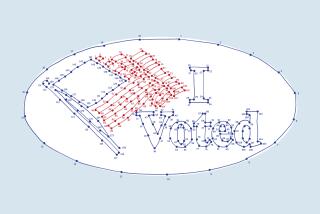Some Sanity for Primaries
- Share via
March Madness is not just about college basketball. It also describes the state’s election system. California voters will go to the polls Tuesday to nominate candidates for the November general election, then endure eight more months of political ads and mailings, eight more months of desperate fund-raising, eight ridiculously long months of grasping for public attention. To say nothing of the fact that voters are paying almost no attention to a primary conducted this early.
California is in this absurd situation because of the rush in recent years to give the state some say in the presidential selection process, moving the primary earlier and earlier to get ahead of other states. For the sake of consistency, the primary is held in March even in years like this one, in which there is no presidential primary.
Enter state Sen. Ross Johnson (R-Irvine), who has a plan for a return to sanity. He has introduced a bill to move the primary election to the second week in September and to hold a separate presidential primary in March every four years. September may be a little late for primary elections in such a big state, but Johnson is certainly on the right track with his bill, SB 1975.
For half a century, California held its presidential and state primaries in early June. Time and again, the presidential nominations were sewn up before that, and the state’s votes were irrelevant. The Legislature moved the primary to the third week in March for the 1996 election, but it made no difference. Too many states jumped to even earlier election dates.
So California moved its primary to the first week in March in 2000, but with marginal impact at best on the nomination process. It also ended up stuck with a far-too-early state primary. So it’s up to the state to split the primaries, despite a bit of added expense. This two-primary system, with nonpresidential voting in September, is used in New York, Connecticut, Florida, Washington and Arizona, among several other states.
In fact, California had dual primaries from 1912 until 1944--a presidential primary in May and the regular state primary at the end of August. The primaries were then combined and moved to the first week in June. Alfie Charles of the secretary of state’s office says the archives indicate that the major reason was to save money, and perhaps to help voters in the armed services. But no one then envisioned holding the primary as early as March.
Officials expect a low voter turnout Tuesday. And Johnson makes the valid point that many potential candidates aren’t running because they would have had to declare their candidacies more than a year before the general election and start raising money.
There’s no accurate estimate of the cost of holding a separate primary in presidential years. One guess made in the 1990s was as much as $40 million. But the cost should become less as newer, more efficient voting systems are adopted. The cost of the present setup can’t be measured, but it is calculated in voter apathy--wasting the very currency of democracy.
More to Read
Get the L.A. Times Politics newsletter
Deeply reported insights into legislation, politics and policy from Sacramento, Washington and beyond. In your inbox twice per week.
You may occasionally receive promotional content from the Los Angeles Times.










